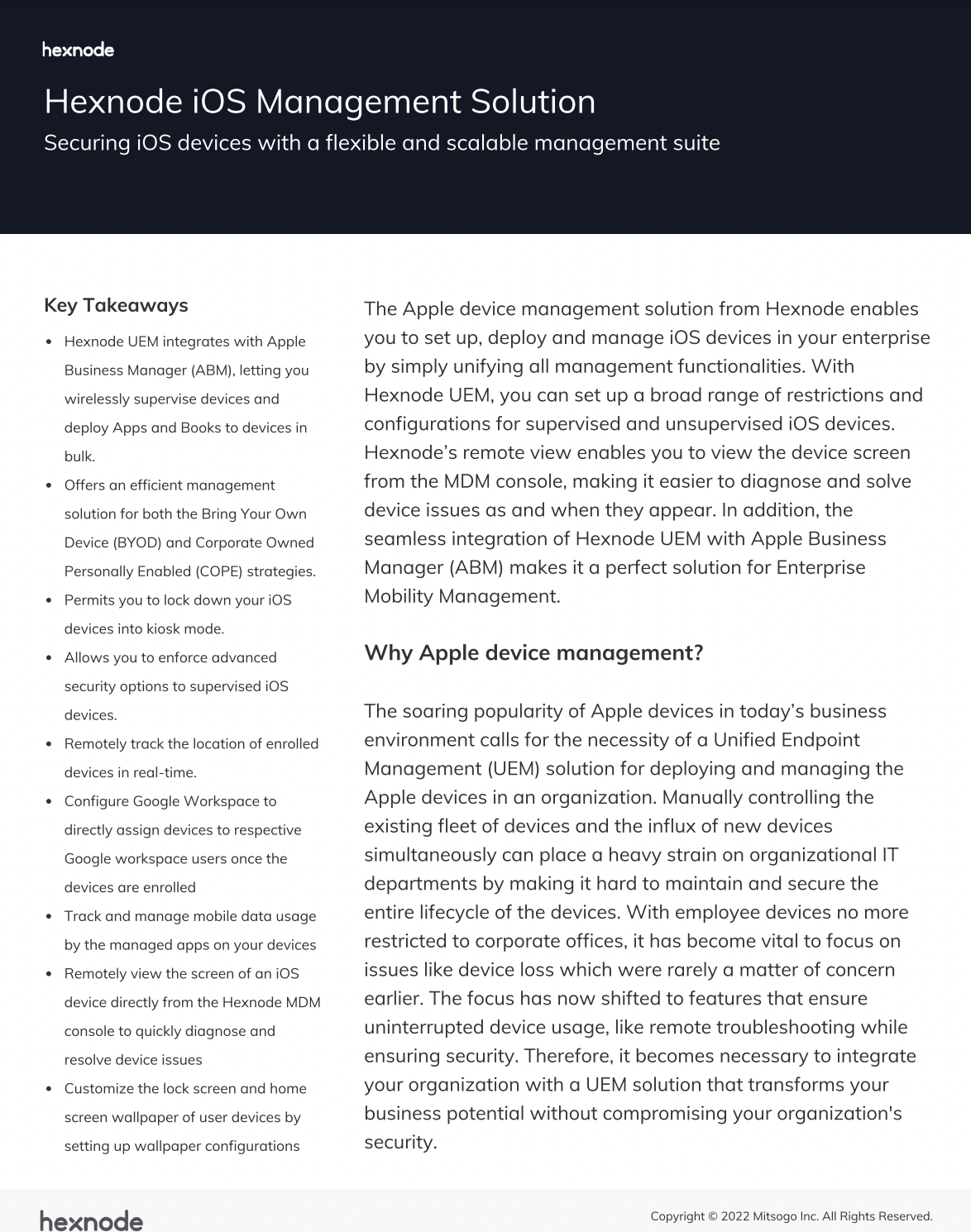Remote access in ios
Remote access refers to real-time device monitoring and control tools like remote view and remote control.

Get fresh insights, pro tips, and thought starters–only the best of posts for you.
Rick Cooper
Dec 6, 2021
7 min read

When you walk into a convenience store and pick out what you need, at the billing counter you will be greeted by that familiar barcode scanner and a chunky machine, which looks far too big for its purpose. I mean, it just has to get information on the products you purchased, honestly your phone does a multitude of tasks and still manages to fit in your palm. Well, if you ever got this thought, trust me, you’re not alone. The moment in your purchasing pipeline where you buy the products is called as Point-Sale (POS) and the chunky hardware equipped with the required software is known as a POS system.
But there’s a lot more you can achieve with a capable POS system.
iPad POS systems offer connectivity with a variety of SaaS applications, allowing you to share data and information across time and attendance, payroll, and e-commerce software.
Traditional electronic cash registers and stationary POS systems can be replaced by iPad POS systems, which are more flexible and adaptable.
iPads also offer integrations with various external POS hardware systems that you might need for your business. With the help of these integrations, you can actually build a fully capable POS system.
One of the most significant advantages is that if you already own an iPad, you can simply download iPad POS software onto your existing tablet rather than investing in new hardware.
iPads are also portable. Unlike their old traditional counterparts, iPads can be moved, if required. This comes in handy especially if you are a small business, a food truck.
If you choose to stay eco-friendly, you can always avoid receipts and e-mail your customers the invoice
Inventory management is automated using POS systems, so you can keep track of your inventory as it changes throughout the quarter. This may save small business owners a lot of time by eliminating the need for manual inventory management. It may also show you exactly when you need to restock goods for your company.
To assist you in managing your organization, iPad POS can provide a variety of statistics and insights. Using analytics, you can categorize inventory sale performance and analyze total sales by day or hour, allowing you to make smarter inventory selections and gain a better knowledge of how your firm is performing.
You can integrate your POS with different software integrations like time management, accounting, and other types of software. You can build a business focused on cloud technology. From analytics reporting to data integrations, there are endless benefits of streamlining your business’s operations using SaaS products.
Finally let’s not forget the fact that having an iPad for your POS says a lot about your business in the modern era and yes, looks and aesthetics do matter in any business.
POS system using iPad: The future of customer-employee interaction
The primary purpose of a typical POS system is to execute the sale. So, it is a given that POS systems have a ton of inventory, customer, and financial data stored in them. Having weak security can compromise such vital data and keep it wide open for hackers.
POS malware is software designed to steal client information from electronic payment cards such as debit and credit cards, as well as POS terminals at retail businesses. It accomplishes this by extracting unencrypted card data from the POS’s memory (RAM), writing it to a text file, and then either transmitting it to an off-site server or retrieving it remotely.
Dickey’s Barbecue Pit, the largest barbecue restaurant chain in the US, suffered a POS breach between July 2019 and August 2020, card details of more than three million customers were posted on a carding and fraud marketplace known as Joker’s Stash.
To battle issues like this, it is suggested to have your iPad POS system managed under a trusted UEM to secure all its endpoints.
Now, imagine you have multiple iPads set up as your POS devices, it is hard to push Wi-Fi passwords to each one of them, especially if you want to be safe and keep updating it every once in a while. But this is simplified with the help of a UEM where you can push the Wi-fi password to all the enrolled devices in the system remotely.
With iPad POS systems there is always one counterargument that comes up to not consider them, and that is wastage of time. Well, it is an iPad after all and there are a multitude of things that you can do with an iPad, stream your favorite TV show, play the all-immersive game you like, and much more. This is bad for productivity and also for security since visiting any malicious sites can compromise valuable user data. To tackle this, with the help of a UEM you can activate Single-app or multi-app kiosk mode and have the iPad locked to only the POS relevant apps.
Get started with Hexnode’s iOS Management solution to manage iPhones or iPads in enterprises; raise employee productivity, and reduce the chances of security breaches and vulnerabilities.

Featured resource
Hexnode iOS Management Solution
If you have an enterprise app or an app that can help with POS capabilities, it can be easily deployed to all the enrolled devices in your enterprise.
Unlock the ability to remotely view what is happening on your device in real-time. This can help troubleshoot problems your employee might face with the UI, you will be able to remotely view their screens and direct them to the right options to choose, making the learning curve for setting up POS a lot easier.
Restrictions…Restrictions…Restrictions…well, they can be annoying if you are an employee, but these are the boundaries that need to be set to ensure your device ecosystem is safe. There are multiple restrictions that you can configure on your POS devices using a UEM. Custom configure your device according to your requirements.
When you turn your device on and see that update icon pop up, and you are one of those people who clicks on ‘Update later’, think again. It is of utmost importance that you use the latest software at all times. Especially when you are dealing with a lot of sensitive content. It can be a hassle to look for updates manually on each POS device and update them. Using a UEM saves you a lot of time by updating all your devices remotely from the console. You can remotely push or restrict the latest updates, or even delay them by a stipulated time if required.
Well, if you are like one of the masses who use their last name in combination with their birth year. Oh well, you are in trouble. Passwords when left to users will give you some very predictable and unfavorable results. Passwords are meant to be unique and strong but not short and easy to remember. With the help of a UEM, you can set rules on the passwords that employees set, to make sure they put in a strong and secure password.
Now that you know the importance of having a UEM for your POS system, let me tell you about a UEM that does it all. Hexnode UEM includes all the above features and more. Hexnode can help you secure all the endpoints of your business, all while not putting a dent in your pocket.